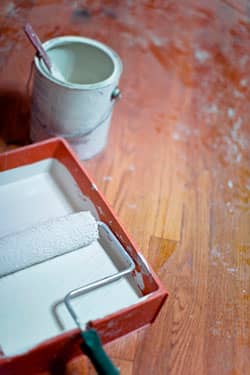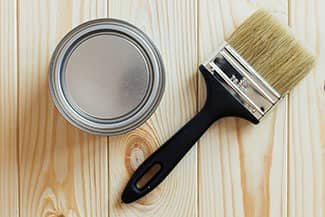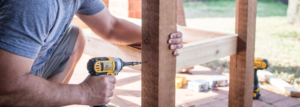If you like taking on do-it-yourself projects, you may have thought about painting the inside of the house yourself. Can you really save money by doing it? And what kind of time and obstacles are involved?
Check out these five facts and figures about painting interiors of houses:
1 | Attention to Detail

Painting the inside of a house is definitely less technical and requires less equipment and less prep work than painting the outside. But the work can require more attention to detail and be meticulous and tedious.
2 | Cost of a Contractor
Generally, to repaint the interior of a 2,000 square-foot house, a contractor would charge you from $2 to $2.50 a square foot. The price will depend on how cluttered your house is, how much furniture the contractor will have to move around, and how many colors you plan to use. But typically, a professional painting job for a 2,000 square-foot home’s interior will cost from $4,000 to $5,000. This will include all the doors and trim. Be aware that rooms with ceilings that are more than 8-feet tall will raise the price as they take more time.
3 | DIY Equipment

If you paint the house yourself, you’ll need at least 30 gallons of paint which could end up costing you about $800 to $1,200. In addition, you may have to spend a couple hundred on a decent ladder, good quality rollers and painter’s tape. Lamb’s wool is the optimum material for paint rollers, but a 50-50 combination of synthetic and wool or a full synthetic roller cover can do the job. You may also need some brushes for touch-ups and cutting in lines on edges.
4 | Painting Ceilings
If you decide to do the ceilings as well as the walls, you may have to spend more on paint, of course, and you may need special hats and glasses to protect yourself and perhaps a taller ladder for really high ceilings. In any case, be sure to cover and protect your furniture and flooring adequately with drop cloths before starting any paint project. Cotton drop cloths can be washed, but plastic cloths cannot and can probably only be used a couple of times before being discarded.
5 | Invest Your Time
Two people working on this repainting should expect to spend three or four full weekends to complete the work. But if you do a decent job, your interior painting will last for 15 years or more.
MORE ADVICE ON DOING DIY PAINTING INDOORS

Do a little research before you choose a wall color. Don’t just hold up swatches next to the wall to see what they’ll look like. Buy some small sample cans of the colors you think you like and paint large squares on the wall first. Then take time to look at those colors several times of day as the light changes to be sure that the colors work.
If you’ve been dissatisfied in the past about how hard it is to clean the flat paint currently on your walls, you might want to choose a low sheen, eggshell or satin finish this time to improve durability. Low sheen, eggshell or satin are often used in bedrooms and living spaces because they’re easier to clean. Semi-gloss or full gloss paints are often used in laundry rooms or bathrooms. Some homeowners prefer satin finishes even in bathrooms. Two coats of paint are better because there will be better color and sheen for the paint job. One coat can work, however, if you are not changing the color or finish of the paint.
When you put the paint on the walls with your roller, keep overlapping one roller length back over the area you did before. That way you can avoid leaving voids in the coverage.
When you’re done, carefully save the cans of leftover paint. Apply a layer of plastic wrap over the top of gallon cans. Pound the lid on with a rubber mallet, not a hammer. Label the can describing where and when the paint was used; then store the can upside down in a cool area. Never try to reopen the can with a screwdriver. Always use a paint key instead.
After thinking at length about all the issues we’ve raised, you might be interested in calling a few painting contractors to get bids after all.
CAN YOU PAINT A SMOOTH STRAIGHT LINE?

One of the toughest parts of the paint job will be cutting in the paint around the top of the ceiling or the edges of baseboards. Using painter’s tape, then brushing the paint over it and removing the tape won’t always work because when you pull the tape off, especially on a textured surface, the paint can bleed under the tape.
The best way is to do this job is with a freehand straight line of paint. It’s hard to do, according to Don Brees of the Rosie on the House Remodeling staff, but a novice can learn how to do it by practicing for about 30 minutes in advance.
###
Photo Credits:




















